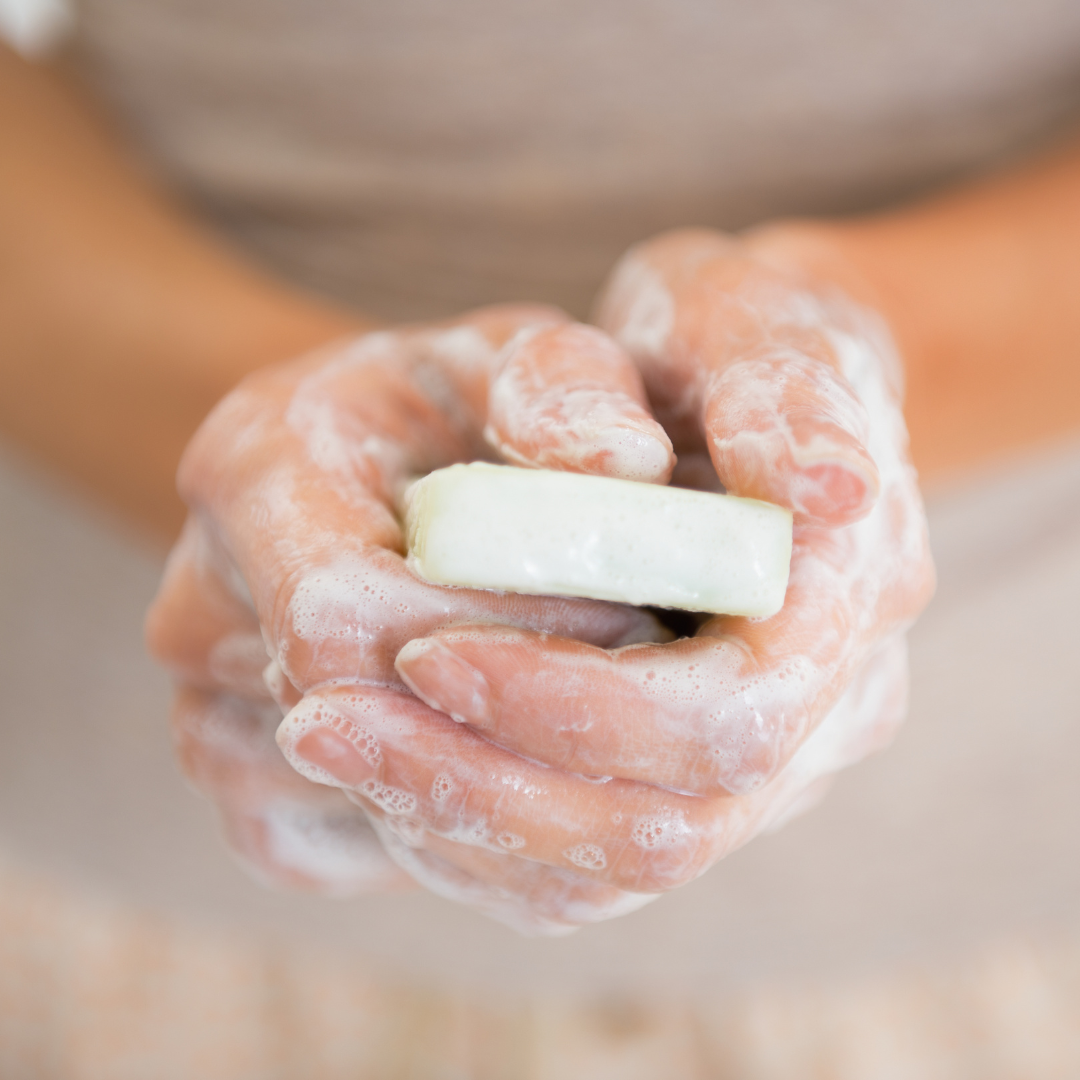There are many ways one can make soap. For example, there is the cold process method vs. the hot process method, both requiring the use of sodium hydroxide lye. For those who do not want to handle lye and the dangers that come with such a caustic compound, melt and pour soaps are a much safer and easier route. Our soaps coming to the store on November 21 are all handmade via the cold process method.
What is the difference between cold and hot process methods? Making soaps via cold process soap is taking melted oils and butters and emulsifying (or mixing two or more liquids that normally are not soluble with each other) with a sodium hydroxide (NaOH) solution. This process requires a minimum of a 4-6 week cure because approximately 97% of the saponification process, how the soap is created by mixing an alkali (i.e., hydroxide solution) with fats creating free fatty acids and glycerol, occurs when your solution and fats are being emulsified. The rest of the process occurs in the following days of creating the soap. Curing is also required to dry the soap, which creates a harder, longer lasting bar of soap.
The hot process method is a little different in that you are cooking the emulsified fats and sodium hydroxide solution, forcing the full saponification process. This method does not require a 4-6 week cure, meaning the soap is ready to use once it is cooled and cut.
I prefer the cold process method because generally you get a longer working time for the batter to remain fluid to create intricate swirls and designs. Hot process soap also appears more rustic rather than homogenous and well blended.
Melt and pour soap is a soap that has already been through the saponification process and has a higher glycerin content that allows the crafter to remelt the soap via double boiler method or the microwave. This type of soap is ready to use once cooled and very safe and easy to work with, making this type of soap great for beginners or for projects with the kids. However, this soap does not hold the same intricate swirls and patterns like cold processed soap and with its higher glycerin content, these soaps will look "sweaty" overtime when exposed to air. This is called glycerin dew and is purely an aesthetic for some and melt and pour soaps form this overtime because glycerin is a humectant that draws moisture from the air.
Some of you may have heard that some people will not use soap if it has been made with lye. The industry dirty secret is that ALL soaps were made with lye. Sodium Hydroxide (NaOH) is used for solid bars of soap whereas Potassium Hydroxide (KOH) is used for liquid soaps. During the saponification process (i.e., when the NaOH solution is emulsified with fats, or the oils and butters), the lye reacts to make the soap and salts that are skin safe. After the saponification process, no lye exists in the final product.
I get it though, handling something so caustic can be pretty scary. The pH of the lye used in soap bars can range from 10-13.9, being very basic and can greatly irritate your skin in its undiluted form or even in a lye solution with neutral distilled water. This is why soapers suit up for safety using latex gloves, long sleeve shirts, pants, close toed shoes, goggles and sometimes aprons, and weigh every ingredient out precisely following a pre-prepared recipe. Just remember that the lye solution does not exist in the final product and properly made soap is always safe to use.
I really like this blog post here, explaining more in depth on why you chemically cannot make soap without lye: Angela Palmer Blog
For those interested in the process, Brambleberry is an amazing resource: Brambleberry blog

